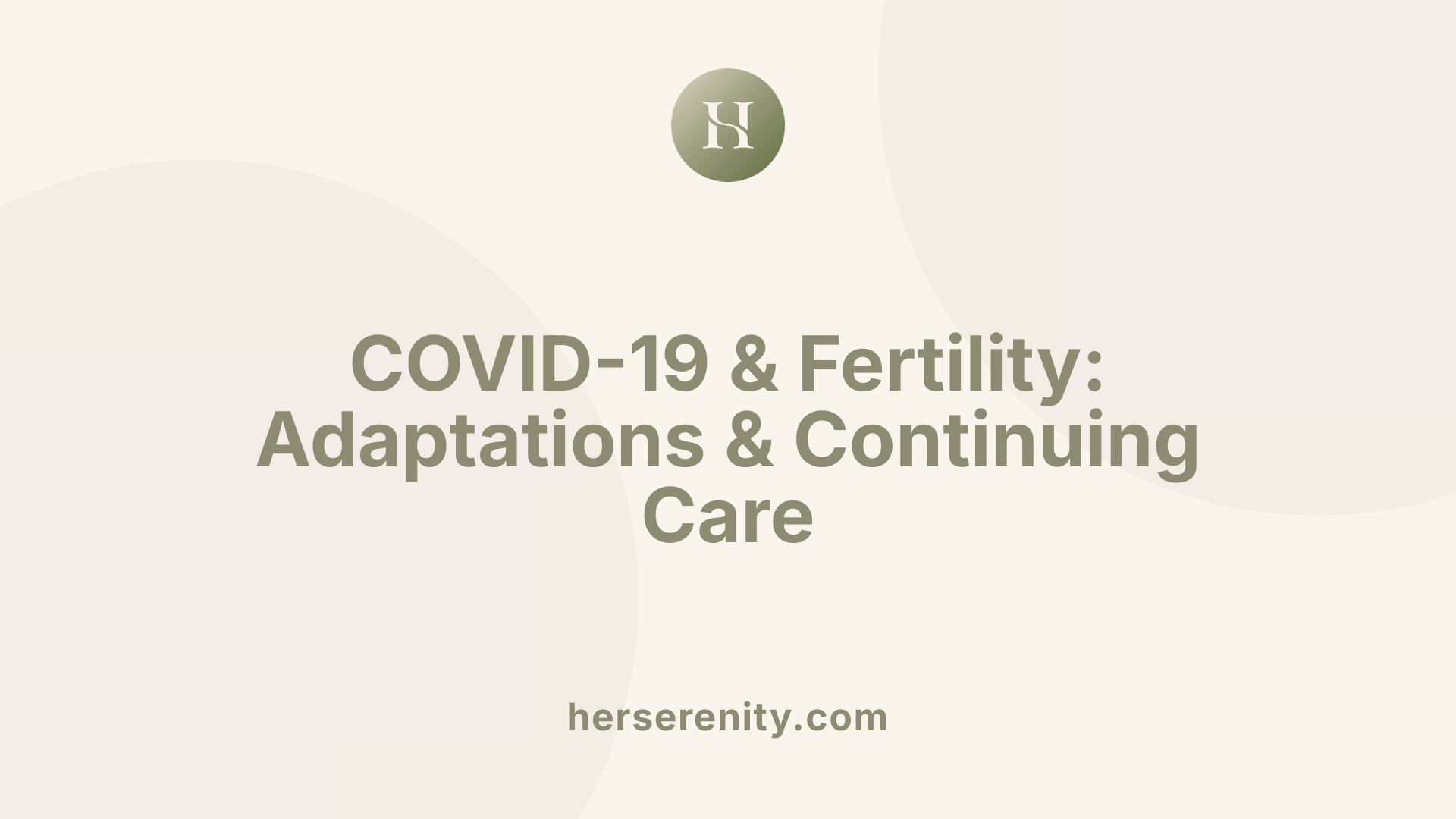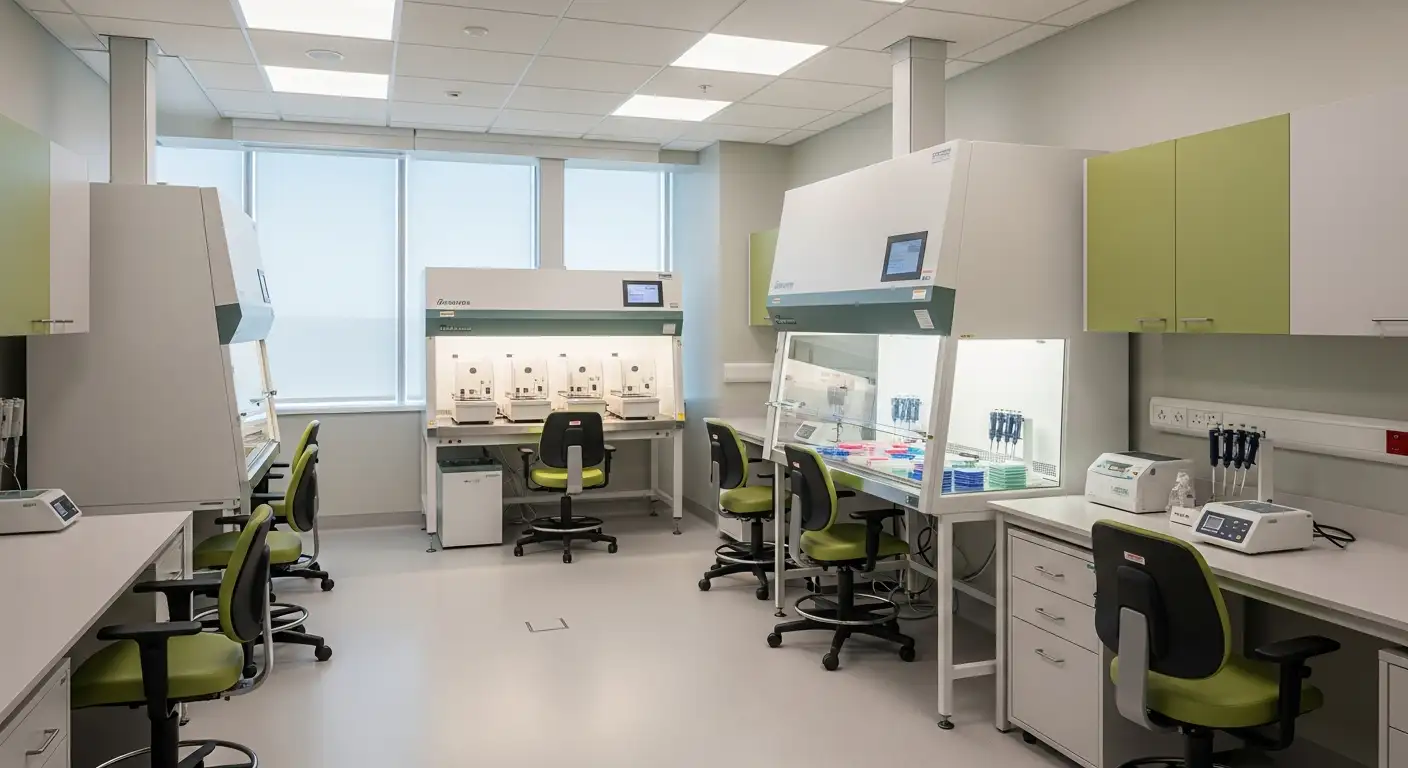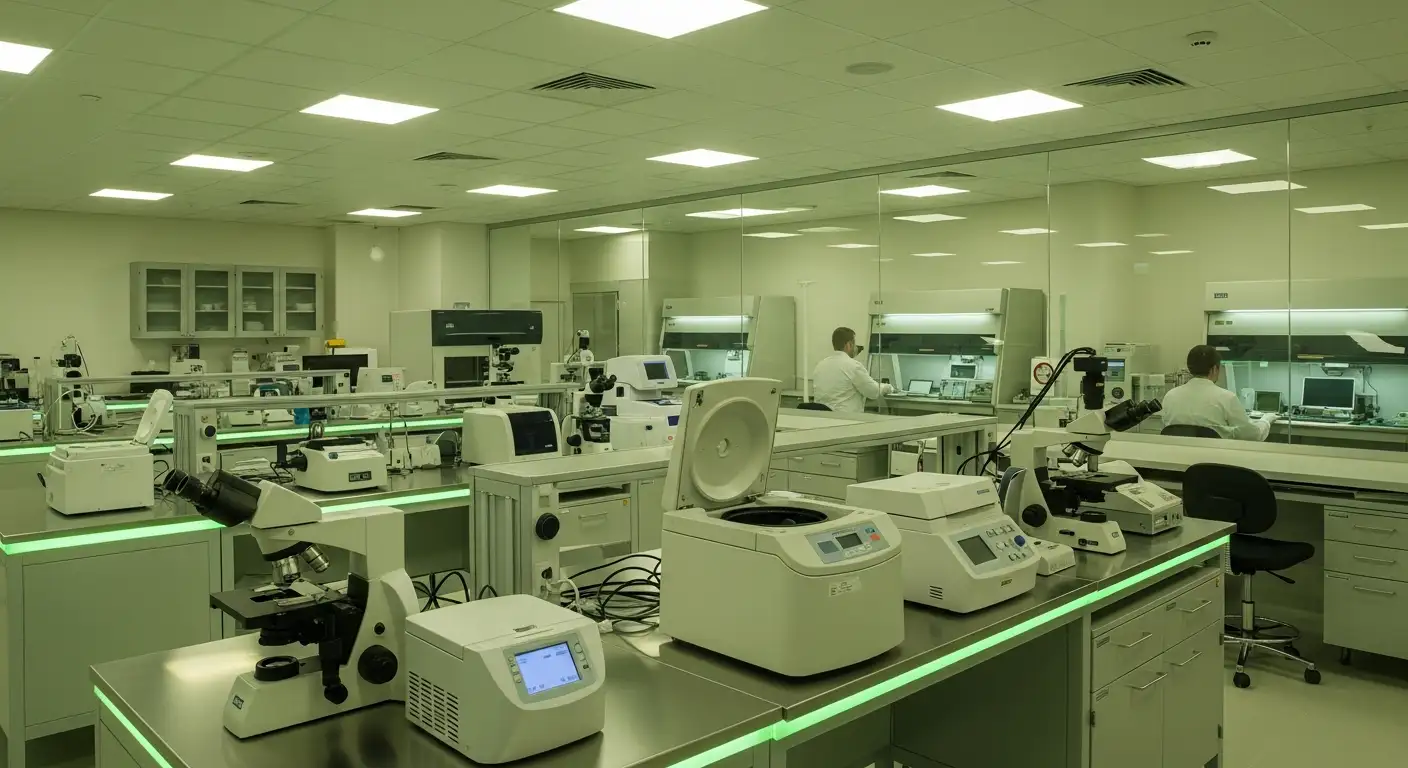When to consider changing fertility protocols
Navigating Adjustments in Fertility Treatment Protocols: When and Why Changes Matter

Understanding the Need for Protocol Changes in Fertility Treatments
Fertility treatments have evolved remarkably, offering hope to individuals and couples facing infertility. Among these, assisted reproductive technologies (ART)—notably in vitro fertilization (IVF)—have become cornerstone options. However, the decision to alter fertility protocols during treatment cycles is complex and influenced by multiple factors including patient response, prognosis, and medical risks. This article explores when clinicians and patients should consider changing fertility protocols, the implications of these decisions, and best practices to optimize outcomes while addressing emotional and ethical considerations.
Overview of Assisted Reproductive Technologies (ART) and Fertility Treatments
What are Assisted Reproductive Technologies (ART)?
Assisted reproductive technologies (ART) are medical procedures that help individuals and couples conceive by manipulating eggs or embryos outside the body. According to the CDC, ART includes treatments such as in vitro fertilization (IVF), embryo biopsy, preimplantation genetic testing, cryopreservation (freezing) of embryos, and gestational carrier use. ART excludes sperm-only procedures like intrauterine insemination (IUI).
Common Medical Treatments Supporting Conception
Common fertility treatments involve medications that induce ovulation or regulate hormones to improve reproductive function. Examples include clomiphene citrate, letrozole, and injectable gonadotropins. These drugs are used during controlled ovarian stimulation to maximize egg production for IVF. Surgical interventions can also address conditions like blocked fallopian tubes or uterine abnormalities.
Variety of Treatment Options and Their Roles
IVF is the most widely used ART method and involves multiple stages: stimulating the ovaries to produce eggs, retrieving eggs via ultrasound-guided needle aspiration, fertilizing eggs in the lab either by standard insemination or intracytoplasmic sperm injection (ICSI), culturing embryos, and transferring them into the uterus.
Additional services like preimplantation genetic testing (PGT) can screen embryos for genetic abnormalities, increasing the chances of a healthy pregnancy. Excess embryos can be cryopreserved for future use. Donor eggs or sperm and embryo donation expand options for individuals facing infertility due to age or medical conditions. Surrogacy or gestational carriers provide alternatives when pregnancy is risky or impossible.
What are the common medical treatments and services available to assist individuals and couples with conception and reproductive health?
Common treatments include fertility medications to stimulate ovulation and hormone support, ART procedures such as IVF and IUI, surgical repairs for reproductive tract issues, and diagnostic evaluations like semen analysis and imaging. Donor gametes, surrogacy, and cryopreservation offer additional routes to parenthood. Psychological counseling accompanies treatment to support emotional health. Access to these services depends on personal factors, insurance, and legal restrictions.
This comprehensive approach to fertility care allows tailored treatment plans and maximizes chances for successful conception while supporting overall reproductive health.
How ART, Especially IVF and IUI, Facilitates Conception
How do assisted reproductive technologies (ART) like IVF and IUI help individuals and couples conceive?
Assisted reproductive technologies (ART) support conception by helping overcome various causes of infertility through different mechanisms. Among these, in vitro fertilization (IVF) and intrauterine insemination (IUI) are widely used.
Mechanisms of IVF and IUI
IUI involves placing a concentrated sample of sperm directly into the uterus, timed around ovulation to enhance the chances of sperm meeting the egg. Medications such as clomiphene citrate or letrozole may be used to stimulate ovulation. Because it does not involve egg collection or embryo manipulation, IUI is less invasive and typically suits mild infertility causes like unexplained infertility or mild male factor issues.
In contrast, IVF involves a multi-step process. Controlled ovarian stimulation is used to maximize the number of mature oocytes, often using gonadotropins paired with GnRH agonist or antagonist protocols. Eggs are then retrieved transvaginally under ultrasound guidance. Fertilization occurs outside the body, either by standard insemination or intracytoplasmic sperm injection (ICSI) for male factor infertility. The resulting embryos may undergo preimplantation genetic testing to screen for genetic abnormalities. Finally, selected embryos are transferred into the uterus to establish pregnancy.
Differences in Invasiveness and Application
IUI is a simpler, less invasive approach ideal for cases where sperm motility or cervical factors are mild issues. IVF is more invasive but allows direct egg fertilization and embryo selection, making it more effective for complex infertility causes such as tubal disease, severe male factor infertility, or when previous treatments have failed.
Addressing Specific Infertility Causes
IVF is often the preferred treatment for blocked fallopian tubes, endometriosis, diminished ovarian reserve, or unexplained infertility that has not responded to simpler interventions. Donor eggs or embryos are used in IVF for women with ovarian insufficiency or gonadotoxic treatment history. For some patients, IVF with gestational carriers is recommended when pregnancy risks are medically prohibitive.
By tailoring the treatment choice according to individual diagnosis and reproductive goals, ART enables many individuals and couples to achieve successful conception despite fertility challenges.
Fundamental Steps and Protocols in IVF Treatment
Ovarian Stimulation and Medication Protocols
In vitro fertilization (IVF) begins with controlled ovarian stimulation to encourage the development of multiple oocytes, thereby increasing chances of pregnancy. Medications such as gonadotropins (e.g., Gonal-F, Follistim, Menopur) are commonly used, complemented by agents like clomiphene citrate or letrozole. To prevent premature ovulation, GnRH agonists or antagonists are employed. Follicle development is monitored regularly through ultrasound and serum estradiol measurements. Protocol variations include long GnRH agonist cycles and GnRH antagonist cycles, tailored to optimize oocyte yield and patient response.
Oocyte Retrieval Techniques
Oocyte retrieval is performed transvaginally under ultrasound guidance, typically using a fine needle to aspirate follicles. This procedure is usually done under sedation. The number of oocytes retrieved positively correlates with successful IVF outcomes. Although generally safe, risks include bleeding, infection, and damage to adjacent structures. Retrieval is timed precisely following final oocyte maturation induction, commonly using agents like hCG or leuprolide (Lupron®).
Fertilization Methods Including ICSI
Following retrieval, eggs are fertilized in vitro. Conventional insemination involves mixing sperm with oocytes, while intracytoplasmic sperm injection (ICSI) directly injects a single sperm into each egg, especially beneficial in cases of male factor infertility or prior fertilization failure. Fertilized eggs develop into embryos, which may undergo preimplantation genetic testing (PGT) to detect genetic abnormalities and improve implantation success.
Embryo Transfer and Cryopreservation
Embryo transfer places one or more embryos into the uterus using a thin catheter, with guidelines recommending limiting embryo numbers to reduce risks of multifetal pregnancies. Single embryo transfer (eSET) is encouraged for favorable cases. Excess embryos can be cryopreserved using vitrification, preserving them for future use and sometimes enhancing obstetric outcomes after thawing. Cryopreservation is a valuable option, especially for patients undergoing gonadotoxic treatments or repeated IVF cycles.
Controlled Ovarian Stimulation: Protocol Variations and Considerations

What Are GnRH Agonist vs Antagonist Protocols?
Controlled ovarian stimulation (COS) is essential for maximizing the number of oocytes retrieved during IVF cycles. It typically involves either GnRH agonist or GnRH antagonist protocols.
GnRH Agonist Protocols: These involve an initial stimulation of the pituitary gland followed by downregulation, preventing premature ovulation. They often constitute a longer treatment cycle.
GnRH Antagonist Protocols: These offer a shorter, more flexible regimen by directly blocking pituitary receptors to rapidly inhibit premature ovulation without initial stimulation.
Both protocols aim to optimize follicle development while allowing precise timing of egg retrieval.
How Does Controlled Ovarian Stimulation Maximize Oocyte Yield?
COS uses gonadotropins—injectable hormone medications like FSH—to stimulate multiple follicles. This maximizes the number of mature oocytes available for fertilization, increasing chances of viable embryos.
Monitoring through ultrasound and estradiol blood tests guides medication dosing and timing. Final oocyte maturation is induced by agents like hCG or leuprolide.
The number of retrieved oocytes correlates positively with pregnancy outcomes, giving patients a better opportunity for success.
How Are Ovarian Response and Risks Like OHSS Balanced?
While maximizing oocyte yield is important, excessive ovarian stimulation can lead to ovarian hyperstimulation syndrome (OHSS), a potentially severe complication.
Clinicians carefully tailor stimulation protocols to balance optimal egg numbers with patient safety. GnRH antagonist protocols and individualized dosing help reduce OHSS risk.
If the risk is detected, cycle cancellation or freeze-all embryo strategies may be employed to prevent complications.
In summary, selection of COS protocol and dosing is individualized to maximize oocyte numbers while minimizing risks, ensuring both efficacy and safety in IVF treatment.
When and Why to Consider Changing Fertility Protocols

Indicators for Protocol Change
In assisted reproductive technologies (ART), particularly in vitro fertilization (IVF), changing stimulation protocols may be prompted by several clinical indicators. Poor ovarian response or unexpectedly low numbers of oocytes retrieved often leads clinicians to re-evaluate the stimulation approach. Additionally, if previous cycles resulted in suboptimal fertilization or embryo development, adjusting protocols may be necessary to improve outcomes. Medical conditions or side effects such as ovarian hyperstimulation syndrome (OHSS) risk might also necessitate modifications to safely continue treatment.
Role of Patient Response and Prognosis
Individual patient response to stimulation and prognosis heavily influence protocol decisions. Patients with diminished ovarian reserve or advanced reproductive age may require altered or more aggressive stimulation protocols to maximize oocyte yield. Conversely, women at risk for OHSS benefit from gentler approaches like GnRH antagonist cycles. The clinician also considers the patient’s prognosis, counseling on limited chances of success (futility <1% or very poor prognosis 1%-5%), to decide whether protocol changes align with patient goals and ethical guidelines. Thorough psychological counseling supports informed consent when prognosis is low.
Impact of Changing Versus Maintaining Protocols
Recent research indicates that IVF success hinges more on egg, sperm, and embryo quality and laboratory techniques than on specific medication protocols. A 2021 Fertility and Sterility study revealed that maintaining the same ovarian stimulation protocol across cycles can improve fertilization and blastocyst development rates, suggesting consistency benefits some patients. When biological materials and lab practices are optimal, switching protocols may not significantly enhance outcomes. Clinicians therefore tailor decisions case by case, balancing risks, benefits, and patient preferences to optimize results.
Impact of Biological Material Quality and Laboratory Techniques on IVF Outcomes
Significance of Egg, Sperm, and Embryo Quality
IVF success relies heavily on the quality of biological materials such as oocytes, sperm, and embryos. High-quality eggs and sperm increase the likelihood of successful fertilization and healthy embryo development. Factors such as age-related ovarian reserve decline or male factor infertility can negatively impact these qualities, which in turn influence treatment outcomes.
Laboratory Advancements Influencing Success
Laboratory techniques have advanced considerably, contributing to improved IVF success rates. Methods such as intracytoplasmic sperm injection (ICSI) help overcome sperm-related fertilization issues. Preimplantation genetic testing (PGT) detects genetic abnormalities before embryo transfer, enhancing implantation rates and reducing risks of genetic disorders. Cryopreservation through vitrification allows for better preservation of embryos without compromising quality, enabling future transfer attempts.
Recent Research on Protocol Consistency
Recent studies have shown that IVF outcomes depend less on specific ovarian stimulation medication protocols and more on biological material quality and laboratory expertise. A 2021 study published in Fertility and Sterility concluded that maintaining consistent protocols between cycles may improve fertilization and blastocyst development rates. These findings support tailoring treatment plans based on individual patient factors while emphasizing the crucial role of skilled laboratory practices and optimal biological sample quality in achieving successful IVF outcomes.
Evaluating Futility and Very Poor Prognosis in Fertility Treatment
What are the definitions and clinical thresholds for futility and very poor prognosis?
In fertility treatment, futility refers to situations where the chance of achieving a live birth is less than 1% per treatment cycle. Very poor prognosis describes scenarios where success odds range from 1% to under 5% per cycle. These thresholds help clinicians assess whether continued treatment is likely to result in pregnancy and live birth, guiding decisions about initiating, continuing, or discontinuing fertility interventions.
What ethical considerations influence decisions to continue or refuse fertility treatment?
Ethical deliberations extend beyond clinical success rates. They emphasize respect for patient autonomy, beneficence, and nonmaleficence. Clinicians may ethically refuse or discontinue treatment deemed futile to avoid unnecessary physical, emotional, and financial burdens. Nevertheless, they should provide patients with full disclosure of prognosis and alternative options, including referrals to other providers. In cases of very poor prognosis, treatment may proceed if risks are acceptable and the patient's values support continuation.
How does patient-centered decision making inform fertility care in low-probability scenarios?
Decisions about fertility treatment must balance medical evidence with the patient's individual circumstances and preferences. Open, thorough communication early and throughout treatment is vital to set realistic expectations and prevent conflicts. Psychological counseling is recommended for patients facing minimal chances of success to support informed choices and emotional well-being. Treatment may be offered on a limited basis to fulfill psychological needs, provided comprehensive informed consent and risk assessment are completed.
| Aspect | Futility (<1% success) | Very Poor Prognosis (1%–<5%) | Decision Considerations |
|---|---|---|---|
| Clinical Probability | <1% chance live birth | 1% to under 5% chance live birth | Use data plus clinical judgment |
| Ethical Action | May ethically refuse treatment | May ethically proceed with treatment | Consider risks, patient values, counseling |
| Communication Needs | Essential full disclosure and referrals | Essential full disclosure and counseling | Patient-centered approach critical |
This framework helps fertility specialists provide care aligned with ethical standards and patient priorities, ensuring decisions are transparent and respectful regardless of prognosis.
Risks Associated with ART and Implications for Protocol Adjustments
What is Ovarian Hyperstimulation Syndrome (OHSS)?
Ovarian hyperstimulation syndrome (OHSS) is a notable complication of assisted reproductive technologies (ART), particularly ovarian stimulation. OHSS occurs when the ovaries respond excessively to fertility medications, leading to swollen, painful ovaries and fluid accumulation in the abdomen and chest in severe cases. While most OHSS instances are mild, severe OHSS can require hospitalization and careful management to avoid serious health consequences.
What Are the Risks of Multiple Pregnancies in ART?
Multiple pregnancies, including twins or higher order multiples, are a common risk associated with ART treatments like in vitro fertilization (IVF). These pregnancies carry increased risks for both the mother and babies, including:
- Prematurity
- Low birth weight
- Preeclampsia and hypertension
- Placental complications
- Increased perinatal morbidity and mortality
Even singleton pregnancies conceived through ART show a slightly elevated risk of adverse outcomes compared to naturally conceived pregnancies. The amplified risk largely stems from the increased likelihood of multifetal gestation, which is a major concern in ART practices.
How Do Guidelines Help Mitigate These Risks?
To reduce the risks related to OHSS and multiple pregnancies, clinical protocols have evolved with safety measures and evidence-based guidelines:
Controlled Ovarian Stimulation: Techniques like GnRH antagonist or agonist cycles help to maximize oocyte yield while minimizing OHSS risk.
Embryo Transfer Recommendations: Limiting the number of embryos transferred—often advocating single embryo transfer (eSET) in favorable cases—significantly lowers the chance of multifetal pregnancies.
Cycle Monitoring and Individualized Treatment: Frequent sonographic and hormonal monitoring adjust medication doses to reduce overstimulation.
Cryopreservation: Utilizing vitrification to freeze excess embryos reduces the need for fresh transfers in high-risk patients, which can lessen OHSS incidence and allow safer timing for implantation.
Multifetal Pregnancy Management: In rare cases of high-order multiples, discussions about multifetal reduction are conducted to manage pregnancy risks responsibly.
The multi-step process of ART, from ovarian stimulation through embryo transfer, requires careful balance between maximizing pregnancy chances and minimizing complications. Protocol adjustments based on individual risk profiles and continuing adherence to guidelines are crucial for optimizing patient safety and outcomes.
Counseling and Emotional Support in Fertility Treatment Decision-Making

What role do counseling and emotional support play in fertility treatments?
Fertility treatments often present significant emotional and psychological challenges for individuals and couples. Counseling and emotional support are crucial in navigating these complexities by offering personalized assessments and targeted interventions.
These services help reduce distress and anxiety related to infertility and treatment processes. Tailored counseling addresses unique stressors, including gender-specific emotional responses, relationship dynamics, and concerns related to sexual health. By fostering emotional resilience, counseling supports patients' mental well-being throughout various treatment phases.
A vital function of counseling is to enhance informed decision-making. It helps patients understand their options, manage expectations realistically, and cope with potential disappointments such as treatment failures or unexpected outcomes. This support is particularly important during protocol changes or when facing difficult decisions like third-party reproduction or surrogacy.
Furthermore, professional emotional support contributes to improved adherence to medical procedures and facilitates healthier communication between partners and families. It helps patients feel heard and respected, thereby promoting patient autonomy and shared decision-making.
Overall, integrating counseling into fertility care leads to a more holistic approach that prioritizes both emotional wellness and treatment success, underscoring the importance of mental health specialists as part of the fertility treatment team.
Patient Communication and Ethical Framework in Treatment Adjustments
Importance of thorough communication
Clear and honest communication is vital at every phase of fertility treatment, especially when prognosis is poor or treatment adjustments are considered. Patients benefit from understanding their individual success rates, the risks involved, and alternative options available. Early discussions help prevent misunderstandings and reduce conflicts throughout the treatment process. Psychological counseling is also recommended to support patients facing challenges such as predicted futility or very poor prognosis.
Developing clinic policies on treatment futility
Fertility clinics should establish evidence-based policies to manage cases with low success chances. Treatments with less than 1% chance of live birth are considered futile, while those offering 1% to 5% success are labeled very poor prognosis. Clinics must provide clear information about these distinctions and outline referral pathways for patients when treatment is unlikely to succeed. Policies should emphasize informed consent and may allow limited treatments to address psychological needs if risks are manageable.
Balancing hope, risk, and ethical responsibility
Clinicians have an ethical responsibility to balance offering hope with avoiding unnecessary medical risks or futility. Decisions should be patient-centered and consider not only clinical probabilities but also individual values and circumstances. Proceeding with treatment in very poor prognosis cases can be ethical if the benefits justify the risks and the patient consents fully. Transparency about prognosis, risks, and alternatives fosters trust and respects patient autonomy in complex decision-making regarding fertility care.
Use of Donor Gametes and Gestational Carriers When Protocol Changes Are Needed
Indications for donor eggs or sperm
Donor gametes are employed in assisted reproductive technologies when individuals face limitations with their own eggs or sperm. Situations include advanced maternal age or ovarian insufficiency, where oocyte quality or quantity is diminished, and severe male factor infertility that impairs fertilization chances. Additionally, individuals with genetic conditions may opt for donor sperm or eggs to reduce risks to offspring.
Alternatives for Women with Ovarian Insufficiency
Women experiencing primary ovarian insufficiency (POI) or diminished ovarian reserve can pursue pregnancies through IVF using donor oocytes. Donor eggs provide higher likelihood of successful fertilization and implantation when a patient's own eggs are inadequate in number or quality. Embryo donation is another alternative, particularly when both gametes are affected.
Role of Gestational Carriers in Risky Pregnancies
In cases where a woman has significant medical risks—such as severe heart disease or pulmonary hypertension—carrying a pregnancy can endanger her health. For these patients, using gestational carriers (surrogates) becomes a safer option. The intended parents’ embryos, created via IVF using their own or donor gametes, are transferred into the carrier’s uterus, allowing biological parenthood without jeopardizing maternal health.
The integration of donor gametes and gestational carriers offers adaptable ART solutions tailored to patient-specific medical needs, improving safety and success rates.
COVID-19 Impact on Fertility Treatment Protocols and Modifications

Initial treatment suspensions and safety considerations
In March 2020, the American Society for Reproductive Medicine (ASRM) recommended the immediate halt of all new fertility treatment cycles to prevent COVID-19 transmission. This suspension reflected the urgent need to safeguard both patients and healthcare teams while assessing risks associated with pandemic conditions. Fertility treatment centers had to quickly modify protocols to align with emerging safety guidelines, ensuring procedures adhered to infection control measures.
Effect of delays on outcomes
Though delays in reproductive care raised concerns about possible negative impacts on clinical outcomes, some studies indicate that postponements of a few months may not significantly diminish success rates. However, prolonged interruptions increase the risk of patients dropping out of treatment, potentially affecting long-term fertility prospects. Careful consideration of patient age and fertility status is essential in managing treatment timing during the pandemic.
Protocol adaptations to safeguard patients and staff
Fertility clinics have adapted protocols to continue offering essential services safely amid ongoing COVID-19 presence. Measures include adjusting schedules to reduce patient density, implementing rigorous screening, and enhancing laboratory safety. Recent research supports the notion that changing ovarian stimulation protocols on repeat IVF cycles does not drastically alter outcomes if the quality of follicles, eggs, sperm, and laboratory procedures remain optimal. This has fostered a more tailored approach, balancing effective treatment with infection control. Ultimately, maintaining biological and technical quality alongside safety practices is critical to preserving ART success during the pandemic.
Data Reporting, Quality Standards, and Transparency in ART Practices

CDC ART Registry Participation
All clinics offering assisted reproductive technologies (ART) are required to participate in the CDC ART registry. This mandatory reporting ensures that clinics submit comprehensive data on treatment protocols and outcomes. The registry promotes transparency by publicly sharing clinic success rates and adherence to federal advertising policies, enabling patients to make informed choices.
Clinic Accreditation and Personnel Qualifications
ART practices must meet minimum standards set for laboratory conditions, equipment, and staffing. Essential personnel include a medical director, laboratory director, and an embryology laboratory director who must possess specific qualifications and training. Contingency plans are necessary to maintain continuity of clinical and laboratory operations in case key personnel are unavailable. Accreditation from recognized bodies further supports adherence to quality standards.
Ensuring Informed Consent and Ethical Compliance
Before any ART procedure, obtaining informed consent is mandatory, complying with ASRM/SART guidelines and federal regulations. Clinics must adhere to established ethical guidelines, ensuring that all treatments align with accepted standards. Experimental procedures require appropriate approval, and record-keeping policies mandate secure, long-term documentation retention, generally for at least 10 years beyond the final disposition of embryos or gametes. Clear communication, ethical practice, and transparency are emphasized to uphold patient rights and support trust in ART services.
The Future of Fertility Protocol Management: Tailored and Evidence-Based Approaches

Personalized Protocols Based on Patient Response
Advances in assisted reproductive technologies (ART) have moved fertility care toward highly personalized protocols. Instead of relying solely on standard ovarian stimulation regimens, clinicians now tailor stimulation methods to each patient's ovarian reserve, age, and response to medications. Recent studies highlight that maintaining consistent protocols across cycles can improve fertilization and blastocyst development rates, emphasizing a more individualized approach that optimizes biological factors unique to the patient.
Leveraging Outcomes Data and Research
The future of fertility protocol management increasingly depends on integrating clinical data and research findings. Large datasets from ART cycles help clinicians evaluate outcomes relative to specific stimulation protocols, fertilization techniques, and embryo transfer strategies. This evidence-based framework supports selecting treatments that maximize success while minimizing risks such as ovarian hyperstimulation syndrome or multifetal pregnancies. Continuous tracking and sharing of outcome data ensure that protocols evolve with emerging knowledge and technological improvements.
Integration of Counseling and Risk Assessment in Protocol Decisions
Decision-making in fertility treatments goes beyond the biological aspects by incorporating thorough counseling and risk assessment. Patients with very poor prognosis or potential futility require clear communication regarding chances of success, ethical considerations, and alternative options. Psychological counseling plays a key role in setting realistic expectations and supporting patients emotionally throughout treatment. By combining clinical judgment with patient values and safety considerations, fertility care teams aim to provide protocols that are both scientifically sound and patient-centered.
Balancing Clinical Judgment and Patient-Centered Care in Changing Fertility Protocols
Adjusting fertility treatment protocols is a nuanced process guided by clinical evidence, patient-specific factors, and ethical considerations. While recent studies suggest treatment outcomes depend more on biological material quality and laboratory expertise than on changing stimulation protocols, decisions to adapt treatments should be made collaboratively with informed patients. Thorough communication, emotional support, and transparent discussions of prognosis empower patients and align medical care with their values and hopes. Continued research and clinic adherence to regulatory standards will further refine when and how protocol changes best serve individuals and couples on their journey to parenthood.
References
- Assisted Reproductive Technology (ART) Techniques
- In Vitro Fertilization - StatPearls
- Fertility treatment when the prognosis is very poor or futile
- Considerations on the restriction of Assisted Reproductive ...
- Does changing stimulation protocols on repeat IVF cycles ...
- Minimum standards for practices offering assisted ...
- Assisted Reproductive Technologies patient education ...
- ART: Step-by-Step Guide
- Perinatal Risks Associated With Assisted Reproductive ...


































































































